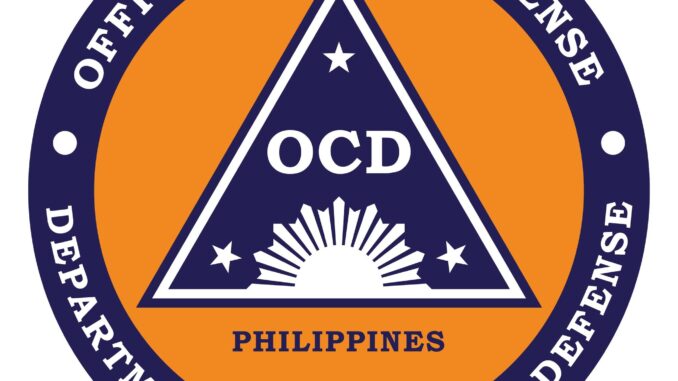
The Office of Civil Defense (OCD) Regional Directors reassured the public that regional government entities are fully prepared to respond to the effects of Tropical Storm “Kristine” and assist areas affected by the storm.
In a virtual press conference held yesterday, the OCD Regional Directors and Officers-in-Charge from various regions—including the Ilocos Region, Cagayan Valley, Central Luzon, CALABARZON, MIMAROPA, Bicol Region, Central Visayas, Western Visayas, Cordillera Administrative Region, and Eastern Visayas—shared crucial updates on their preparedness and response measures.
The majority of the regions reported several key actions undertaken as part of their emergency preparedness and response (EPR) protocols.
These actions include conducting Pre-Disaster Risk Assessment meetings, activating response clusters, issuing preparedness directives to members of the Regional Disaster Risk Reduction and Management Councils (RDRRMC) and Local DRRM Councils, prepositioning resources, and ensuring the readiness of funds, search, rescue, retrieval teams, and emergency telecommunications equipment.
Additionally, warnings and advisories have been disseminated; classes have been suspended; and continuous monitoring of the situation is being maintained.
OCD Eastern Visayas Regional Director Lord Byron Torrecarion emphasized the directives received from National DRRMC Chair and Defense Secretary Gilberto Teodoro Jr. during his recent visit to Leyte. One key directive was to facilitate the necessary financial resources for procuring relief items for distribution to affected communities.
In Central Visayas, RD Joel Erestain reported that his office is closely coordinating with the Department of Public Works and Highways (DPWH) to mitigate flooding impacts along roadways. Ongoing monitoring of river conditions in the region is also being conducted to effectively address potential flood risks.
OCD Spokesperson Director Edgar Posadas provided clarifications on the Emergency Preparedness and Response (EPR) protocols and explained the distinctions between Alpha, Bravo, and Charlie protocols along with their associated critical actions.
“It’s a mechanism that we follow. There are parameters depending on the exposure to risk. The higher the risk, the higher the protocol we implement,” he said.
Director Posadas also highlighted that the Department of Social Welfare and Development (DSWD) is actively engaged in assessing the number of affected families and implementing anticipatory actions to facilitate effective planning. This ensures that the needs of impacted areas are adequately addressed.
The Operations Centers of the OCD Regional Offices are continuously monitoring both the situation and the effects of Tropical Storm “Kristine” in coordination with Local DRRMCs and Offices.
Concurrently, at the national level, OCD Central—along with other member agencies of the National Disaster Risk Reduction and Management Council (NDRRMC)—is monitoring developments and coordinating anticipated requirements from regions to ensure resource augmentation in support of regional and local operations.
Earlier, seven regions were placed under a Red Alert status, activating Charlie Protocol—the highest level of emergency preparedness. These regions include the Cordillera Administrative Region (CAR), Regions II, III, V, VIII, CALABARZON, and MIMAROPA—all considered high-risk in an emergency situation.


Be the first to comment